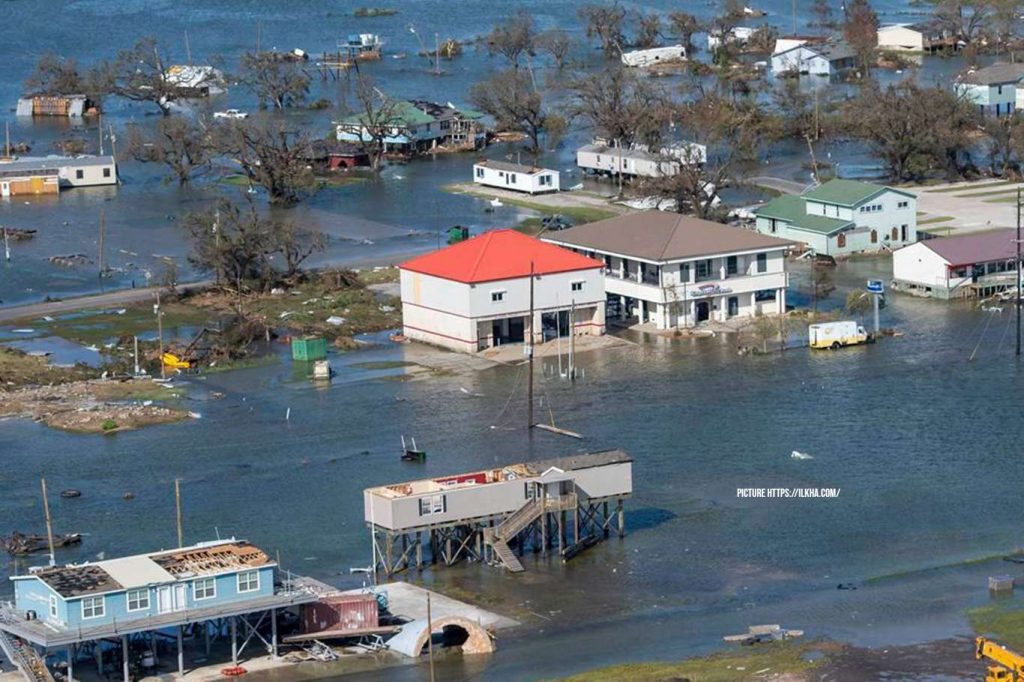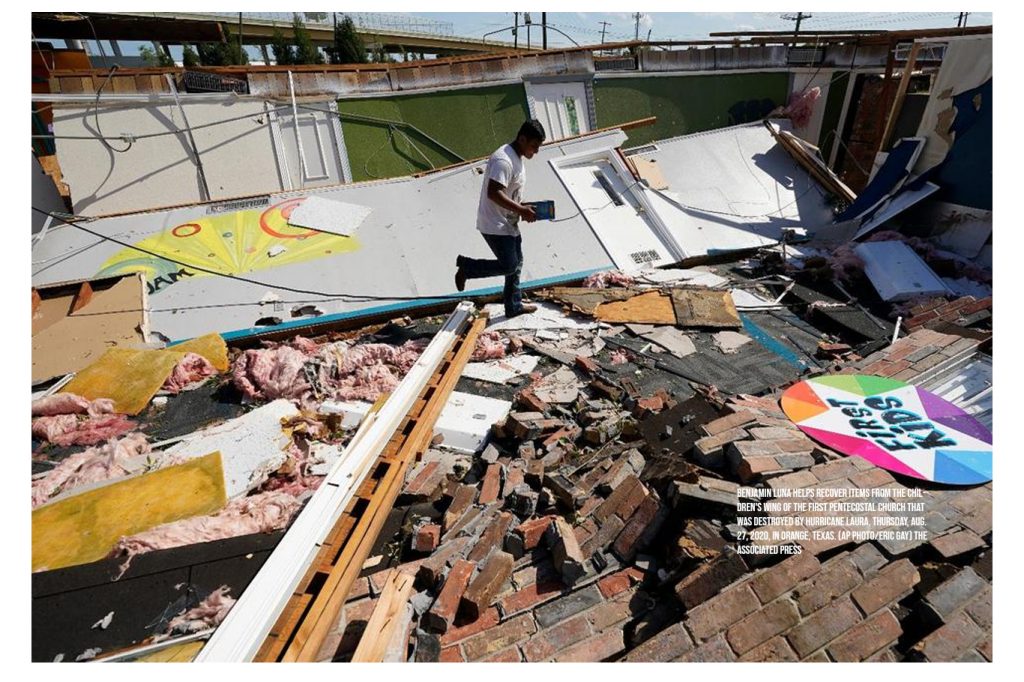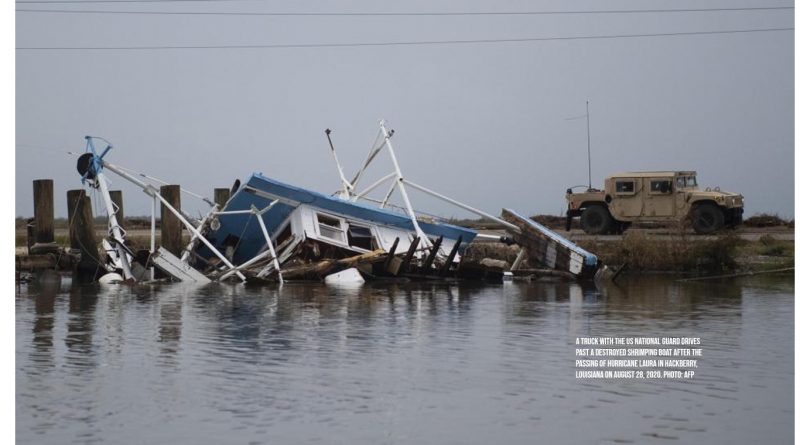Murieron al menos 14 personas en EEUU por el paso del huracán Laura
El gobernador de Louisiana, John Bel Edwards, confirmó que los fallecidos se registraron en su estado, algunos por los árboles que cayeron sobre las casas
Al menos 14 personas murieron después de que el huracán Laura azotó los estados de Louisiana y Texas en el sur de Estados Unidos, dijeron el viernes autoridades y medios de comunicación locales.
El gobernador de Louisiana, John Bel Edwards, confirmó que al menos 10 personas habían muerto en su estado, la mitad por usar generadores portátiles que producen monóxido de carbono en interiores, después de que la tormenta tocara tierra el jueves.
Cuatro de las muertes restantes fueron causadas por los árboles que cayeron sobre las casas de las personas, según Edwards, mientras que un hombre se ahogó después de que su barco se hundiera en la tormenta.
El viernes había 464.813 usuarios sin electricidad en Louisiana, de acuerdo con el sitio Poweroutage.us.
Texas se salvó de la peor parte del huracán, que que se ha debilitado significativamente. Tres de las cuatro muertes del estado también fueron reportadas por envenenamiento de monóxido de carbono de los generadores.
Esas víctimas, que se cree que no tenían hogar, se refugiaron en un salón de billar en la ciudad del sureste Port Arthur y metieron su generador al interior, según el Beaumont Enterprise.
Los medios locales reportaron que un hombre murió el viernes en la mañana en el este de Texas, aunque no está confirmado si su muerte está directamente relacionada con el huracán.
La filial de la CBS para el este de Texas dijo que el hombre murió cuando un árbol cayó sobre su casa móvil en Hemphill.
El servicio de protección civil de Haití dijo el viernes que 31 personas fallecieron a causa del huracán Laura, que azotó a esa nación como una tormenta tropical el fin de semana pasado antes de convertirse en un poderoso huracán de categoría 4.
A las 03.00 GMT del viernes, el ojo de Laura estaba ubicado 50 kilómetros al nororeste de Little Rock (Arkansas), soplaba con vientos máximos sostenidos de hasta 55 kilómetros por hora y avanzaba en dirección nornoreste a 24 kilómetros por hora.
Pese a su rápido debilitamiento en las últimas 24 horas, el NHC alertó que la amenaza de inundaciones sigue vigente.
El gobernador de Luisiana, Johan Bel Edwards, consideró que el estado tiene “mucho que agradecer”.
“Está claro que no sufrimos ni sufriremos el daño catastrófico que imaginamos basados en el pronóstico que teníamos anoche”, dijo Edwards en conferencia de prensa. “Pero hemos sufrido una cantidad enorme de daños” y miles de residentes del estado han visto “sus vidas trastocadas”.
El huracán Laura azotó la costa de Luisiana el jueves temprano como tormenta de categoría 4, la segunda más alta en la escala de vientos. Pero en el correr del día bajó su intensidad hasta transformarse en tormenta tropical.
El huracán Katrina, que dejó 1.800 muertos en 2005, era tormenta categoría 3 cuando tocó tierra. Solo una tormenta ha tocado tierra en Luisiana con vientos tan altos como Laura: el huracán Last Island en 1856, que dejó cientos de muertos.
Las autoridades registraron seis muertes, todas relacionadas con accidentes derivados de la tormenta. Cuatro de ellas fueron provocadas por la caída de árboles.
Las otras dos muertes, según las autoridades de salud, fueron de un hombre que sufrió envenenamiento derivado de monóxido de carbono de un generador en su casa, y otro que se ahogó cuando el bote en el que se trasladaba se hundió durante la tormenta.
“Me preocupa que a medida que continuamos saliendo y realizando búsquedas y rescates primarios y secundarios encontremos más muertos”, advirtió el gobernador Edwards.

Laura victims may go weeks without power; US deaths reach 14
LAKE CHARLES, La. (AP) — The Louisiana coastline devastated by Hurricane Laura began a long and gloomy recovery Friday as hundreds of thousands of people still without water and power confronted the possibility that basic services may not return for weeks or even longer. The number of dead climbed to at least 14.
A day after the Category 4 storm hit, more bodies emerged in the aftermath in Louisiana and neighboring Texas. The deaths included five people killed by fallen trees and one person who drowned in a boat. Eight people died from carbon monoxide poisoning due to unsafe operation of generators, including three inside a Texas pool hall, where authorities say the owner had let seven Vietnamese shrimp boat laborers and homeless men take shelter. The other four were in critical condition.
The lack of essential resources was grim for the many evacuated residents eager to return.
Chad Peterson planned to board up a window and head to Florida. “There’s no power. There’s no water. There’s no utilities,” he said.
Thousands of people who heeded dire warnings and fled the Gulf Coast returned to homes without roofs, roads littered with debris and the likelihood of a harsh recovery that could take months.
Lawrence “Lee” Faulk came back to a home with no roof in hard-hit Cameron Parish, which was littered with downed power lines. His metal storage building, 24 feet square, was thrown into a neighbor’s oak trees.
“We need help,” Faulk said. “We need ice, water, blue tarps — everything that you would associate with the storm, we need it. Like two hours ago.”
The White House said President Donald Trump would visit the region Saturday and survey the damage.
Simply driving in Lake Charles, a city of 80,000 residents that sustained some of the worst damage, was a feat. Power lines and trees blocked paths or created one-lane roads that drivers had to navigate with oncoming traffic. Street signs were snapped off their perches or dangled, and no stoplights worked, making it a trust exercise with those sharing the roads.
Mayor Nic Hunter cautioned that there was no timetable for restoring electricity and that water-treatment plants “took a beating,” resulting in barely a trickle of water coming out of most faucets. “If you come back to Lake Charles to stay, make sure you understand the above reality and are prepared to live in it for many days, probably weeks,” Hunter wrote on Facebook.
Caravans of utility trucks were met Friday by thunderstorms in the sizzling heat, complicating recovery efforts.
Forty nursing homes were also relying on generators, and assessments were underway to determine if more than 860 residents in 11 facilities that had been evacuated could return. Water outages remained a major problem in evacuated facilities, the Louisiana Department of Health said.
Meanwhile, the hurricane’s remnants threatened to bring flooding and tornadoes to Tennessee as the storm, now a tropical depression, drifted north. Forecasters warned that the system could strengthen into a tropical storm again upon returning to the Atlantic Ocean this weekend.
In the storm’s wake, more than 600,000 homes and businesses were without power in Louisiana, Texas and Arkansas, according to poweroutage.us, which tracks utility reports.
The Louisiana Department of Health estimated that more than 220,000 people were without water. Restoration of those services could take weeks or months, and full rebuilding could take years.
Ira Lyles returned to find that his downtown Lake Charles salon called The Parlor House survived with little damage, but his home was destroyed.
“It tore the front off, tore the front of the roof off, picked up my camper trailer and hit the side wall, and the side wall buckled and cracked inside,” he said. “I think it’s going to be a wash.”
Louisiana Gov. John Bel Edwards called Laura, which packed a top wind speed of 150 mph (241 kph), the most powerful hurricane to strike Louisiana, meaning it surpassed even Katrina, which was a Category 3 storm when it hit in 2005. He said officials now believe the surge was as high as 15 feet and added that tens of thousands of people were displaced by the storm.
Late Friday night, Edwards announced that the president had approved Louisiana’s major disaster declaration request, saying in a statement that the step paves the way for getting aid to the hard-hit communities.
More than 580,000 coastal residents were put under evacuation as the hurricane gained strength in the Gulf of Mexico. Laura was the seventh named storm to strike the U.S. this year, setting a new record for U.S. landfalls by the end of August. Laura hit the U.S. after killing nearly two dozen people in Haiti and the Dominican Republic.

In Lake Charles, chainsaws buzzed and heavy machinery hauled tree limbs in the front lawn of Stanley and Dominique Hazelton, who rode out the storm on a bathroom floor. A tree punctured the roof just a few feet from where the couple was taking cover.
They regretted staying.
“There’s people without homes,” Stanley Hazelton said. “So it was dumb. We’ll never do it again. We’ll never stay through another hurricane again.”
Associated Press contributors include Jamie Stengle in Dallas; Janet McConnaughey in New Orleans; John L. Mone in Holly Beach, Louisiana; Paul J. Weber in Austin, Texas; Seth Borenstein in Kensington, Maryland; and Adrian Sainz in Memphis, Tennessee.


 (1) (2).jpg)


Debe estar conectado para enviar un comentario.